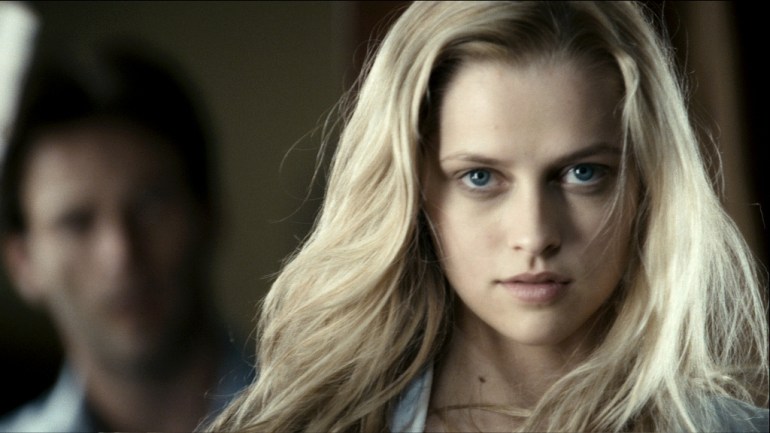Restraint was backed by the government’s screen agency, directed by one of the country’s top TVC directors, and starred rising talent. Brendan Swift finds out why a $5 million taut-thriller gathered dust for years before a one-week cinema run in 2009. Restraint will be shown on TV this weekend on Channel Nine at 9.30pm on Saturday, April 14. (This article originally appeared in IF #121, June 2009.)
It was an auspicious day. On April 2, Restraint had its premiere at inner-Sydney’s Chauvel Cinema – a small dual-screen complex better known for showing small Australian and art-house films. Among the cast and crew were respected director of photography Simon Duggan (I, Robot, Knowing), co-producer Anna Fawcett, and top TV commercials director David Denneen. But Denneen would give no speech that night. It had been almost four years since cameras stopped rolling and the film’s long-delayed release was less a celebration than a Pyrrhic victory.
“It was on at nine o’clock, no publicity, and hardly anyone went, but at least I ticked a box off and was able to sell it to France,” Fawcett says. The one-week limited release at the Chauvel satisfied a French requirement that foreign-made films for local TV broadcast must have a theatrical run in its home country.
The commercially-focused film – a psychological thriller about two fugitives who take refuge in a mansion owned by an agoraphobic art dealer – had appeared destined for bigger things before things began to unravel.
The Film Finance Corporation (since merged into Screen Australia) announced plans to invest $4.14 million in the project – then known as Power Surge – in December 2004. The New South Wales Film and Television Office ($100,000) and US-based Form/Global Cinema Group completed the budget. (However, there remains some contention about the actual budget with the filmmakers stating the FFC invested about half of the estimated total $4 million budget.)
Underwear model Travis Fimmel and actress Teresa Palmer were cast alongside UK-actor Stephen Moyer in the key roles. While the careers of all three have since taken off, their relative obscurity was to become a key point of contention for distributors.
The film, which changed its name to Guests and then Ravenswood, finished its shoot in regional NSW’s Goulburn and Camden areas in the second half of 2005 and was due to be released in May 2006.
Accent Film Entertainment director Peter Campbell – who originally had the distribution deal – says Restraint was aesthetically strong. However, he held reservations about the size of the film’s potential target audience, the star power of the cast, as well as the film’s ending.
“What they wanted to do in terms of the theatrical spread was just too big for what it was likely to take [at the box office] and therefore we would have been up for a fairly hefty P&A [prints and advertising costs] and take a very large loss into the DVD release,” he says.
After multiple test screenings, the film was cut back from about 120 minutes to 90 minutes and the ending re-jigged to make it slightly more ambiguous. (The original alternate ending is included on the DVD.) However, it continued to be turned down by local distributors. A precondition of the FFC’s $4.1 million investment was a guarantee that the film would have a theatrical release – it also had approval over the appointment of a distributor. A Screen Australia spokeswoman declined to answer questions about its involvement in the production.
As the saga dragged on, the film’s most experienced producer Mark Lazarus left Filmgraphics to become a project manager at the Australian Film Commission in August 2006. The Film Finance Corporation announced that it would invest $1.04 million in his next feature film project, The Loved Ones, in December 2007.
Deneen, who recently worked on Optus’ high profile TV commercial campaign and hopes to make other features, says he would never make another film without a written pre-sale agreement. He would also like to see more distribution support from Screen Australia, which is currently reviewing its marketing support and promotion guidelines.
“It’s great they give you the finance but really they should have an arm that supports Australian films because they invest all this money and the money disappears into oblivion because the films aren’t getting distributed,” he says.
Underlying the dilemma is the ongoing dire performance of local films at the box office, which has made exhibitors even more reticent to back local films this year. The release of teen thriller Crush was delayed several times before embarking on a small Perth screening in a bid to prove it could attract an audience. It follows the dismal box office performances this year of films such as Beautiful, which cost about $2 million (not including distribution costs such as advertising) and took just $51,008 across 19 screens.
Restraint co-producer Anna Fawcett says the team felt the pressure of making their first feature film and had many people advising them to go down different paths. “It was a comedy of errors because we weren’t experienced enough. But we are now.”
A scene from Restraint, starring Teresa Palmer.



